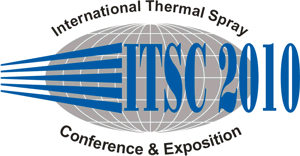
|
| Abstract No.: |
|
| Title: |
Effect of carbide type on the properties of low vacuum plasma sprayed W-based composite coating layer
|
|
| Authors: |
Kee-Ahn Lee / School of Advanced Materials Engineering Andong National University, South Korea
Jee-Hoon Ahn / Welding Research Center, RIST,
Young-Min Jin/ School of Advanced Materials Engineering, Andong National University, Korea
|
|
| Abstract: |
Two types of W-based composite powders containing ZrC or HfC were prepared by PAS (Plasma Alloying & Spheroidization) process. And, the fabrication of W-based composite coating layers (W-ZrC and W-HfC) was attempted by using LVPS (Low Vacuum Plasma Spray) deposition method. Effect of carbide type on the macroscopic properties of LVPS W-based composite coating layer was investigated and comparatively analyzed. It is suggested that W-based composite coating layers with thickness of 500§ or more could be well produced by LVPS method. Microstructural observation (optical and SEM), EPMA and X-ray photoelectron spectroscopy (XPS) were used to examine the shape and distribution of particles, carbides and formed phases of W-based composite coating with different carbide types. LVPS W-ZrC composite coating layer showed higher hardness (about 160 Hv more) than that of W-HfC layer. However the adhesive strength of W-ZrC composite coating was slightly lower than that of W-HfC coating layer. The result of plasma torch test for evaluating high-temperature ablation resistance clearly indicated that LVPS W-based composite coating layers (W-ZrC and W-HfC) had superior ablation resistance comparing to pure W coating material. The correlation between macroscopic properties and microstructurul evolution with different carbide type was also discussed.
|
|
